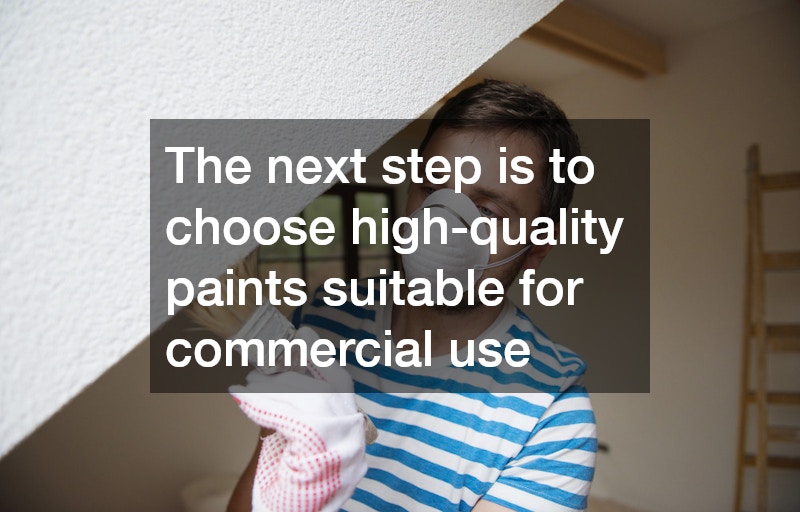Completing a commercial painting project requires careful planning, execution, and attention to detail to ensure a professional finish. Whether you’re refreshing a retail space or updating an office, here are key steps to consider for a successful outcome.
First, assess the scope of the project. Determine the areas that need painting, including walls, ceilings, and trim.
Take measurements and evaluate the condition of the surfaces, noting any repairs needed before painting can begin. Proper preparation is crucial for achieving a smooth finish.
The next step is to choose high-quality paints suitable for commercial use. Consider factors such as durability, finish, and color. It’s essential to select paints that can withstand heavy traffic and are easy to clean, ensuring longevity in a commercial environment.

Before painting, it’s essential to prepare the workspace thoroughly to create a clean and organized environment. Start by moving furniture and other items away from the walls to prevent any accidental damage or paint splatter. Cover surfaces such as floors and countertops with drop cloths or plastic sheeting to protect them from spills. This step is crucial not only for preserving your existing decor but also for ensuring a smoother painting process. Additionally, check that the area is well-ventilated. Proper airflow helps to dissipate fumes and ensures a more comfortable working environment. Opening windows and using fans can enhance ventilation, making the space safer for anyone involved in the project.
Timing your painting project is another important factor. Consider scheduling the work during off-peak hours or on weekends to minimize disruption to business operations. Inform employees or tenants in advance so they can plan accordingly, especially if the painting will affect high-traffic areas. Clear communication about the timeline and scope of work can help everyone adjust to the changes smoothly and maintain productivity.
Once you’re ready to start painting, select the right techniques and tools to achieve the best results. Brushes, rollers, and sprayers each have their specific applications and benefits. Brushes are excellent for detail work and edges, while rollers cover large surfaces quickly and efficiently. Sprayers can provide an even coat on textured surfaces but may require more skill to use effectively. Choosing high-quality tools will enhance the application process and improve the overall finish of your project. Make sure to apply paint in thin, even coats, allowing adequate drying time between each layer. This approach not only ensures a smoother finish but also reduces the risk of drips and uneven textures.
After the initial coats are applied, take the time to inspect your work carefully. Look for any areas that may need touch-ups or corrections, particularly around corners, edges, and high-traffic spots that may have been missed. Touching up these areas ensures a uniform appearance and enhances the overall professionalism of the job. If you notice any flaws or imperfections, don’t hesitate to reapply paint in those spots, taking care to blend it seamlessly with the surrounding areas.
Furthermore, once the painting is completed, don’t rush to move furniture back into place. Allow ample drying time to ensure that the paint sets properly and adheres well to the surfaces. Rushing this process can lead to smudges or damage to the newly painted areas.
Finally, maintain an organized workspace throughout the project. Clean up any spills promptly, and ensure that tools and materials are stored safely. A tidy environment not only enhances safety but also creates a more pleasant atmosphere for everyone involved.
By following these steps, you can help ensure that your commercial painting project is completed successfully and meets your expectations. A well-executed painting job can significantly enhance the aesthetic appeal of your business space, creating a welcoming environment for employees and clients alike. Ultimately, investing time and effort into the preparation and execution of your painting project will yield long-lasting results that enhance your commercial space’s appearance and functionality.



